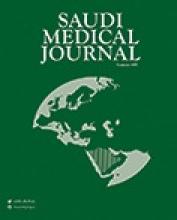Abstract
OBJECTIVE: To estimate the prevalence of enuresis in primary school children in Iran and to determine the factors associated with this disorder.
METHODS: A cross-sectional time-ordered study was performed at the Faculty of Medicine, Isfahan Medical University, Isfahan, Iran from September 2005 to January 2006. A total of 4500 self-administered questionnaires were distributed to parents of children aged 6-12 years attending 30 primary schools.
RESULTS: From an overall response rate of 69.9%, enuresis was reported in 216 children (7%), comprising 6.2% for nocturnal enuresis according to ICD10 and 3.3% according to DSM IV, 0.5% for diurnal enuresis and 0.8% for combined day and night wetting. Primary nocturnal enuresis was reported in 166 children (5.3%). Seventy-one (50.7%) of the 140 children with nocturnal enuresis had ≥3 wet nights per week. A positive family history in father and mother was seen in 51% and 39% of children with primary nocturnal enuresis respectively. Using logistic regression analysis, younger age (p<0.002), gender (p<0.0001) and low level of education of mother (p<0.028) were significant predictors of enuresis. Positive history of enuresis in father was a significant predictor of primary nocturnal enuresis (p<0.012).
CONCLUSION: The prevalence of nocturnal enuresis in Iran is lower than those reported in western countries, however, higher percentage demonstrated severe enuresis. The prevalence of diurnal enuresis is lower than previous studies. Age, gender and the educational level of the mother are the main risk determinants of enuresis and the prevalence of primary nocturnal enuresis appears to be significantly related to positive history of enuresis in father.
- Copyright: © Saudi Medical Journal
This is an open-access article distributed under the terms of the Creative Commons Attribution-Noncommercial License (CC BY-NC), which permits unrestricted use, distribution, and reproduction in any medium, provided the original work is properly cited.






